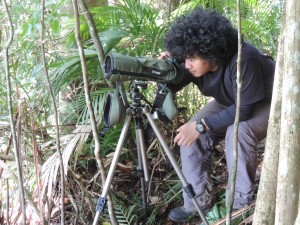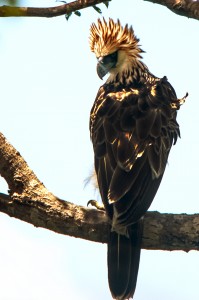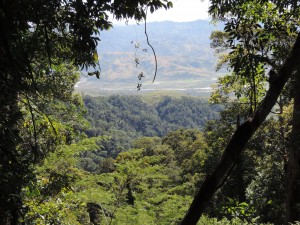
Whenever someone asks me what I do for a living, I always respond by showing them a picture of a raptor and then go on explaining what my organization and I are doing for the conservation of the species. The usual replies I get after showing them the picture are “Wow”, “That’s a fierce looking bird”, or “It looks like a rock star”. The bird that they are trying to describe is the Evolutionarily Distinct and Globally Endangered Philippine Eagle (Pithecophaga jefferyi) and I’m J Kahlil Panopio, an EDGE fellow working to conserve their population in Mt. Mingan (Mt. Dingalan Important Bird Area) in Central Luzon, Philippines.
I have been working as a research assistant for the pioneer biodiversity conservation organization in the Philippines called Haribon Foundation for the Conservation of Natural Resources Incorporated since 2012. The name Haribon was coined from Haring Ibon which means “King of Birds”, the local name of our national bird or the Philippine Eagle. Conservation of threatened Philippine birds has been my main field of interest ever since I started working in Haribon. The development of the State of Philippine Birds book was one of my earlier tasks working under Haribon’s research department. My escapades as research assistant allow me to help several local governments all over the Philippines in monitoring their Important Bird Areas (IBAs) following the state, pressure, and response framework. With the help of ZSL-EDGE, my latest adventure brings me deep inside the tropical rainforest of Central Luzon to conserve our Haring Ibon.

Philippine Eagles can be found in four islands in the Philippines namely, Luzon, Samar, Leyte, and Mindanao. Majority of the information about the ecology of Philippine Eagles are from the Mindanao population. Because of the significant difference of species composition, density and diversity of Philippine Eagle prey between Luzon and Mindanao, it is crucial to fill the information gap about the Luzon population. Knowing the difference between the Luzon and Mindanao population of Philippine Eagles would lead to more appropriate conservation strategies specific to the Luzon population.
My EDGE Fellowship will take place in the pristine old growth broadleaf forest of the Sierra Madre Mountain Range in the island of Luzon facing the Pacific Ocean. Specifically, I’ll be doing research on the triangular land form lodged between the Northern and Southern Sierra Madre called Mt. Mingan. The Mingan Mountain Range is shared by the province of Nueva Ecija and Aurora. I’ll be working closely with the local stakeholders and the Department of Environment and Natural Resources to declare Mingan as a Critical Habitat using the Philippine Eagle as a flagship species which will in turn provide a legal framework for its conservation.

The conservation of the Mingan Mountains would be a big leap for the future of Philippine Eagles and of the Sierra Madre as a whole. The designation of the Mt. Mingan as a Critical Habitat for the Philippine Eagle will bring us a step closer to a sustainably managed forest. This will conserve not only the Philippine Eagle but also other threatened species that are important both ecologically and economically. This will help maintain a balanced ecosystem and continuous stable supply of ecosystem services for wildlife and local communities as well.